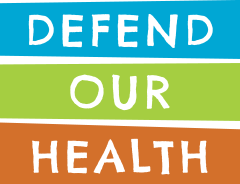3 Key Steps to Protecting Your Child from Asbestos at School
August 18, 2017 | Uncategorized |
A guest post by the Asbestos Disease Awareness Association.
It’s back-to-school season again, and like most parents you’re probably elbow-deep in shopping lists and prep checklists. We spend these last golden days of summer scouring store shelves for the perfect lunchbox and meticulously styling cool first-day outfits, hoping to set our kids up for success.
The whirlwind of setting up for another school year is enough to have you breathing a sigh of relief when you finally load your little ones back onto the school bus. As we pass our babies into the hands of their teachers and school administrators, we want to believe they’re safe from harm, but when it comes to asbestos in schools, it’s up to us as parents to play the watchdog role.
A little known but harrowing statistic: Schoolteachers are more than twice as likely to die from mesothelioma, an asbestos-caused cancer, than the general U.S. population. In fact, teachers are among the top five occupations with the highest risk for asbestos diseases, right up there with construction workers and chemical plant employees. If teachers are dying from asbestos exposure, what about their students — our children — who sit in the very same classrooms, breathing the very same air?
1. Understand the Risk
Asbestos is prevalent in our nation’s schools. The United States Environmental Protection Agency (EPA) “estimates that there are asbestos containing materials in most of the nation’s approximately 107,000 primary and secondary schools.” More than one-third of American students (34%) were enrolled in a school with asbestos-containing material that could easily crumble. Exposures to asbestos in schools are expected to increase as school buildings age.
Also know that asbestos has not been banned in the U.S., and without a ban asbestos-contaminated products find their way on to store shelves far too often. Chillingly, many of these toxic products are meant for kids, from toys and crayons to play makeup. Be wary of what your kids are playing with — both at school and at home — especially products made in China, where asbestos is still mined and heavily used in manufacturing.
2. Know the Rules & Your Rights
Public and non-profit private schools are required by federal law to protect school children and school employees from asbestos exposure under a law called Asbestos Hazard Emergency Response Act (AHERA).
Unfortunately, despite the law our schoolchildren, teachers, and staff remain at risk, in large part due to lack of awareness and poor enforcement. Sen. Barbara Boxer and Sen. Edward Markey asked each state for information on asbestos in schools to survey compliance with AHERA standards. The responses indicated serious failures by the federal government and a vast majority of states to sufficiently protect students, teachers and staff.
Ask your school board and school administrators what steps they have taken. You have to be a squeaky wheel. If you do not get direct and concrete answers, keep asking. You have a right to this information, and your children have a right to protection.
3. Spread the Word and Organize
The EPA issued “The ABCs Of Asbestos In Schools” to help parents and teachers. Print this out and share it with your school administrators and other parents.
If your school or district has a PTA or other sort of parents’ group, consider raising this issue with them. Few among us have the time to fully address such a complex, obscure issue on our own, but as a team we can develop a manageable action plan. Strength in numbers is especially important when protecting our kids requires us to stand up to authority.
As daunting as this news may seem, you’ve already taken an important first step in the right direction by empowering yourself with education. Asbestos-caused diseases are 100% preventable, if we can just prevent asbestos exposure. We have all of the tools we need to minimize the risk of asbestos in schools — we just have to make sure these tools are being properly used.
If you’re angry that your kids have been left in danger, you should be — but turn your anger into action and get started on this checklist today.
Continue to educate yourself and find ways to take action on a bigger scale by seeking out unions and environmental and public health groups working to raise awareness and improve policy and regulations. These groups are fantastic at keeping concerned citizens up-to-date about legislative news and ways to take action, like calling elected representatives or adding your name to this important petition.
With awareness, education, and collaborative action, we can better protect our families and make the world a safer place for the generations to come.
